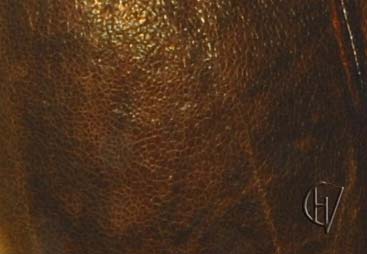back

You may recognise this Agabus species rather easy, by a combination of: is size (8.5 mm) the black head. its black pronotum with (seemingly) lighter colored broad margins and its brown wing cases, that have a crude reticulation. It can therefore be distinguished from A. paludosis, A. uliginosis and A. congener, which also have brown elytra. (van Nieukerken, 1992 and also Foster & Friday, 2011), the latter describe in their table a finer meshwork within a larger meshwork on the elytra).
This species is very common in the Netherlands and can be found in many places. (Nieukerken, 1992). I have some older pictures of beetles that were probably also A. Sturmii, but I didn't have identification tables at that time. The specimen on this page was captured together with an A. undulatus female in a shallow, slow-flowing stream.


"What's in a name":
This beetle does not have an English name. The species was named in 1808 by Leonard Gyllenhaal, who's name can be found (with one a) in the full name: Agabus sturmii (Gyllenhal, 1808). Those brackets mean that Gyllenhaal first gave the beetle a different genus name, so the name became Agabus later than 1808. And so, according to the rules, the author's name must be in brackets. Nilsson (2001) gives Dytiscus sturmii as the original name. Many water beetles used to be called Dytiscus (diver) and if you have seen beetles from the Dytiscidae family yourself, you will not be surprised (see also the pages about naming). Later this group was subdivided into smaller ones, including the genus Agabus, proposed by William Elford Leach in 1817, see Wikipedia.
The designation sturmii can actually only be a name after someone called Sturm(i). (The i behind such a name is doubled, but the rule is not always applied consistently). This person was Jacob Wilhelm Sturm (more about "Sturm" in the paragraphs at the bottom of the page).
In the Agabus genus many species of beetles were dropped. The family is closely
related to the genus Ilybius . Both fall into the subfamily Agabinae, which
also includes Platambus. The classification seems to be troublesome: subgenera
(subgenera) have also been proposed, such as Acatodes. Van Nieukerken (1992) suggests
these divisions are "kunstmatig en slecht onderbouwd" (meaning artificial and
poorly substantiated), but he also mentions the possibility that Agabus is not a
monophyletic genus and should be split (with reference to work by Nilsson from 1986).
Another classification is described by Nilsson in 2000. This includes A. sturmii
under Acatodes. In several references on the web the beetle can now be found as
"Agabus (Acatodes) sturmii (Gyllenhal 1808)", in the keys of Foster and
Friday (2011) Agabus is divided in three subgenera: Acatodes, in which A.
sturmii is placed, Agabus sensu stricto and Gaurodytes. Systematics in
Foster & Friday, 2011 :
Dytiscidae familie - Agabinae subfamilie - Agabus genus -
Acatodes subgenus - A. sturmii.
Literature:
Zie See also the LITERATURE LIST of water beetles.
Nilsson,A., (2010) "All diving beetle specific and subspecific names explained"
Skörvnöpparn, Insekter I Norr, Supplement 1, 2010, 1-42, Umeå University
Retrieved 19 feb 2024 from:
https://www.researchgate.net/publication/265254408_All_diving_beetle_specific_and_subspecific_names_explained
Nilsson, A.N., "A new view on the generic classification of the Agabus-group of
genera of the Agabini, aimed at solving the problem with a paraphyletic Agabus (Coleoptera:
Dytiscidae)". Koleopterologische Rundschau 70, 17-36 - Wien, juni 2000
Retrieved 13 april from: https://www.zobodat.at/pdf/KOR_70_2000_0017-0036.pdf
Nilsson, A.N., 2015 A World Catalogue of the Family Dytiscidae, or the Diving Beetles (Coleoptera, Adephaga) Version 1.I - University of Umeå, Sweden. Retrieved 10 april 2022 from: http://www.waterbeetles.eu/documents/W_CAT_Dytiscidae_2015.pdf
Schönherr C.J.: Synonymia Insectorum, oder: Versuch einer Synonymie aller bisher
bekannten Insecten; nach Fabricii Systema Eleutheratorum &c. geordnet. Vol. 1.
Eleutherata oder Käfer
Read it on 10 april 2022 from:
https://www.biodiversitylibrary.org/item/133106#page/23/mode/1up
Several pages Wikipedia, see the links in the text.
Which Sturm? (how I found this name, for those interested).
I came across Jacob Wilhelm Sturm on page 21 of the aforementioned Synonymia Insectorum, where I found this entry: Sturm Verz. - Verzeichnis meiner Insecten Samlung, oder Entomologisches Handbuch führ Liebhaber und Samler, von Jacob Sturm. Erstes Heft, Nüremberg 1800. This talented engraver and insect collector co-founded a Nuremberg Natural History Society in 1801. It wasn't until months after making this webpage, that I found the list of Nilsson, 2010, in which this author is confirmed.
In the eighth century, a Sturmius, who was also called Sturmio, Storm or Sturmi, lived in Fulda as the first abbot of the abbey there. He was a follower of Boniface and ensured that the bones of that saint ended up back in Fulda after the murder at Dokkum. He was later canonized and is now called Saint Sturmius, but it simply cannot be that person.
A better candidate might be: the 17th century professor and philosopher Johann Christoph Sturm. But he had no interest in insects.